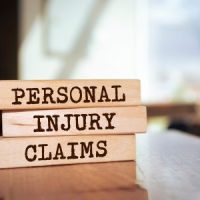The Nuts and Bolts of a Pedestrian Injury Claim

Memorial Day Weekend begins the annual 100 deadliest days for pedestrians. During the summer, more people, especially more children, are out and about. Vehicle traffic usually increases as well. Many of these drivers are in unfamiliar parts of town, visiting tourist attractions, friends or relatives. So, they over-rely on distracting GPS navigation devices. This combination is often deadly for pedestrians, especially if a tortfeasor (negligent driver) hits a pedestrian at more than 40mph.
Twelve months a year, a Sugar Land pedestrian accident lawyer works hard to uphold the rights of pedestrian accident victims. These rights include the right to maximum compensation for their serious injuries. This compensation usually includes money for economic losses, such as medical bills, and noneconomic losses, such as pain and suffering. Additional punitive damages may be available as well, in some extreme cases.
Claim for Damages
Most pedestrian accidents occur outside marked crosswalks. Although pedestrians may not have the right-of-way in these situations, they’re still eligible for compensation, if the driver was negligent. In Texas, negligence, or a lack of care, has basically four prongs:
- Duty: The duty of reasonable care, which applies to most drivers in most situations, is based on the story of the Good Samaritan. Like this man went out of his way to help an injured traveler, drivers must go out of their way to avoid accidents.
- Breach: Aggressive driving may be the most common breach of duty in Texas. We mention the crucial role that vehicle speed plays in pedestrian injuries. Speed also increases the risk of a wreck. Quite simply, speeding drivers cannot quickly react to emerging hazards, like jaywalking pedestrians.
- Cause: Texas is a substantial cause state. A Missouri City personal injury lawyer must prove, by a preponderance of the evidence (more likely than not), that the tortfeasor’s aggressive driving or other breach of care substantially caused injury. Compensation is still available if another cause, even the victim’s negligence, contributed to the accident.
- Damages: The physical injuries in a pedestrian claim are often devastating. Pedestrians have no protection from oncoming care or trucks. The emotional injuries are often even worse.
If the victim was in the crosswalk and had the light, the negligence per se doctrine may apply. Tortfeasors could be liable for damages as a matter of law if they violate a safety rule or law, and that violation substantially causes injury.
Possible Defenses
The nature of a negligence case sets up two possible insurance company defenses in pedestrian accident claims, comparative fault and sudden emergency.
Competitive fault attacks the substantial cause prong of an ordinary negligence or negligence per se case. For example, if the victim was jaywalking, the insurance company might blame the victim for the wreck.
If the judge allows the insurance company to present such evidence, jurors must divide fault on a percentage basis (50-50, 70-30, etc.) based on that evidence.
Texas is a modified comparative fault state with a 51 percent threshold. Victims are entitled to proportional compensation if they’re less than 51 percent responsible for damages.
In some limited cases, the sudden emergency defense, which shifts liability completely onto the victim, may be available. Normally, a jaywalking pedestrian is like a pothole, stopped-short vehicle, or other everyday hazard that drivers must avoid. However, a situation like a pedestrian running across a freeway in the middle of the night (completely unexpected situation) might fit the bill.
Reach Out to a Compassionate Harris County Attorney
Injury victims are entitled to significant compensation. For a confidential consultation with an experienced personal injury attorney in Missouri City, contact the Henrietta Ezeoke Law Firm. Virtual, home, and hospital visits are available.
Source:
ultimatedefensivedriving.us/2024/05/100-deadliest-days-2/
